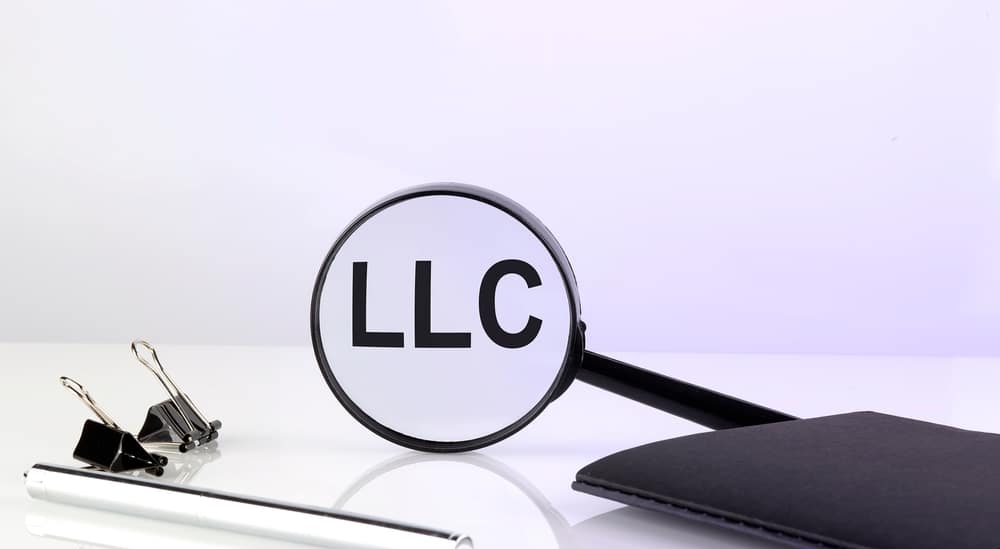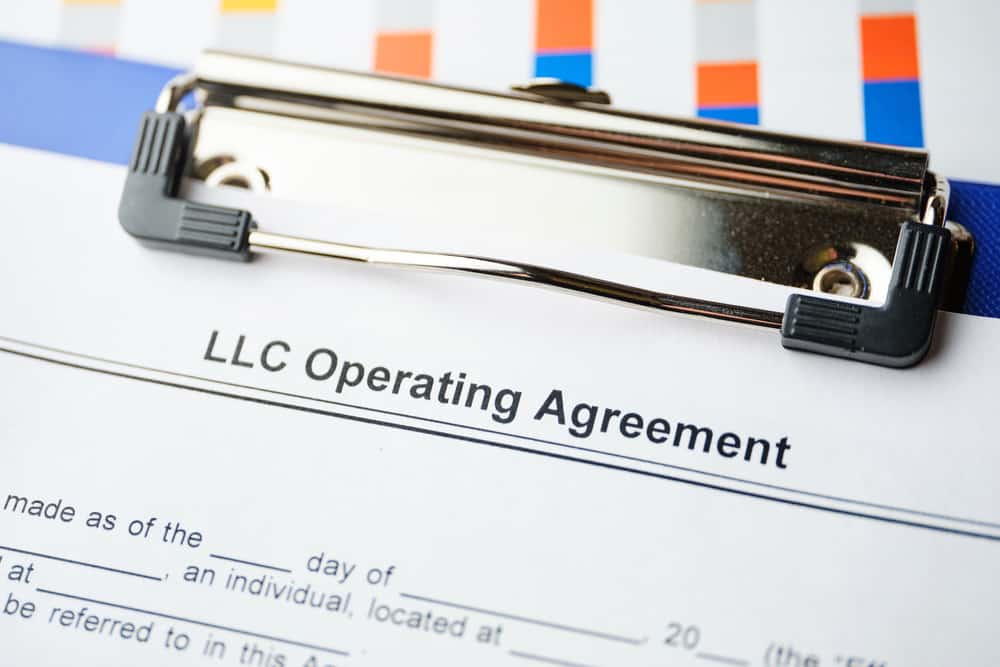Closing an LLC is a difficult decision. Most of the time, it’s a result of certain unexpected drawbacks or failing to meet financial goals. However, it could also be a result of the business outrunning its course.
One thing is certain – dissolving an LLC when you no longer have a passion for operating it is the best strategy that allows you to invest your time and energy elsewhere. Regardless of why you’re dissolving your LLC, there’s a standard procedure that you need to follow. To help you out, we’ll explain in great detail how to dissolve an LLC and guide you through every step of the process.
We start off by explaining all the different LLC dissolution types. After going through every step in the dissolution process, we go over important questions, like how to cancel your EIN (Employee Identification Number), and follow it up with a detailed FAQ section.
With that said, let’s start by explaining what exactly it means for an LLC to be dissolved.
What Does It Mean for an LLC to Be Dissolved?

Dissolving an LLC simply means putting a stop to all operations related to the business and closing it down.
There are many reasons why one would dissolve an LLC – from lack of profit to failing to keep up with its demands. However, closing an LLC isn’t always related to business failure – many entrepreneurs find that the LLC doesn’t meet their personal standards and expectations, so they decide that closure is the best way to go.
Types of LLC Dissolution
There are three main types of LLC dissolution: judicial, administrative, and voluntary.
As you can imagine, judicial dissolution is related to a court’s decision. It’s issued by a court and it’s often a result of failing to meet the state’s standards, having tax-related issues, or skipping an important step of operating the business. Additionally, judicial dissolution is often a result of a lawsuit against the LLC in question, usually from a member who no longer wants to be associated with the LLC.
The second type of LLC dissolution, administrative dissolution, is issued by the Secretary of State. It’s similar to judicial dissolution in that it’s a result of failing to comply with the laws in the state where the LLC is located. Essentially, everything that relates to breaking the law of operating LLCs and having illegal practices falls under administrative dissolution.
Last but not least, voluntary dissolution, as its name suggests, occurs when LLC members mutually decide that they no longer want their business to operate. They make an agreement by casting a vote. Other cases of voluntary dissolution are a result of a clause written in the LLC’s operating agreement.
What Happens if I Don’t Dissolve my LLC?
Many entrepreneurs wonder if they can keep their LLC alive even when it’s inactive. However, this is rarely a good idea. Naturally, LLCs that don’t operate also don’t generate a profit, so you’ll need to have a lot of finances set aside to keep it alive.
Even if your LLC isn’t active, you still need to pay taxes and file annual reports, which can cost you a lot of money. Failing to do so without notifying your state that your business is no longer in operation results in high fines and potential legal problems. The longer your LLC exists without operating or generating profit, the more fees will pile up.
If you think your LLC has run its course, dissolve it as soon as possible to avoid the abovementioned scenarios. Otherwise, you’ll be met with a myriad of fees and penalties.
How to Dissolve an LLC

Now that you’re acquainted with the different types of LLC dissolution, it’s time to go over all the steps required to dissolve an LLC.
1. Make an Agreement With Your Members
Unlike corporations, LLCs require only the permission of other members for the business to be dissolved. This is what we referred to earlier as voluntary dissolution. The first step to dissolving an LLC is getting approval from every member – it has to be a unanimous decision, a majority decision, or two-thirds. The laws vary in each state, so read up on your state’s laws before holding the meeting.
If you’re thinking of dissolving your LLC, you can bring that up during a meeting and point to the LLC operating agreement. Once a decision has been made, you’ll need to put it on a written record and keep it in your LLC official records for future use.
Dissolution can also be caused by some kind of trigger listed in the operating agreement, such as the death of a fellow member. If this is the case, you should follow the steps listed in the operating agreement to proceed with the dissolution.
If your LLC operating agreement doesn’t have a procedure for your current circumstance, you should follow the LLC dissolution procedure in your state.
2. File a Final Tax Return
The next step to dissolving an LLC is filing a final tax return to pay off any taxes that you owe to the state. As you’ll see in the next step, some states ask you to provide a tax clearance before you officially dissolve your business. Even though this step doesn’t apply to every state, you’ll have to pay off any leftover taxes.
The state has to acknowledge that you’re no longer tax liable. For this to happen, you should file a final tax return with the state and the IRS. You’ll also need to state in the form that this will be your LLC’s final tax return.
Additionally, you should fill out Schedule K-1 and provide a copy of it to every member of the LLC. This is necessary for the personal tax returns to be completed – another step in filing a final tax return. Don’t forget, the state will hold you accountable if your personal taxes aren’t paid in a timely manner.

3. File a Certificate of Dissolution with Your State
Once the members have reached a decision, or something has occurred to disrupt the LLC’s operations, you need to file a certificate of dissolution with the state. Essentially, this is a document indicating that you want to officially dissolve your business. It requires basic information like the name of your members and details of your LLC.
You need to complete the online form and proceed with the next steps, which vary from state to state. Some states require a tax clearance, so ensure that you have that ready if it’s a requirement in your state.
Keep in mind that most states charge a fee for this step to be completed. When your document gets approved, keep it in your records.
4. Notify All Your Clients and Creditors
Now that you’ve done your final tax return and filed a certificate of dissolution, you’ll need to notify all of your clients and advisors about the closing of your business. Doing so lets all the parties involved know that the LLC will no longer exist, and it also gives them a chance to file a lawsuit in time. You also have to include the mailing address to which your creditors can send any claims.
Much like the other steps included in this process, the procedure varies from state to state – some states require you to give official notice.
5. Pay Off Any Debts You Have
Just like completing all your taxes, you should also pay off any remaining debts of your LLC. This includes paying any leftover bills and paying off all your creditors. To do this step successfully, you should start your dissolution process early on to have enough time to gather all the finances.
The next step is to pay all your employees for the time they have remaining in your company.
Setting financial debts also includes closing your utility accounts. Of course, you should let your customers know about this so you can collect any payments owed by them.
Going through all these steps helps protect you from being personally liable for any financial-related claims in the future.
6. Distribution of Assets

Now that your taxes and financial debts are settled, your focus should be on distributing any remaining assets from your LLC to all the members. These assets include any profits made, equipment, or potential investments. The distribution of the assets is listed on your operating agreement, so make sure you consult it during this step.
It’s important to note that these distributions have to be reported to the IRS. If you have any questions or concerns regarding the distribution of the remaining assets or any liabilities you might be privy to, you can always hire a legal consultant to help you during this step.
7. Cancel Any Licenses and Permits You’ve Obtained for Your Business
Many businesses, like those in the medical field, require licenses to operate legally. Another step in dissolving your LLC is cancelling any licenses and permits you have. To cancel your licenses, you have to contact the government agencies that issue them.
Additionally, during this step, you should also close any accounts or registrations under the name of your LLC.
Additional Steps

Depending on the nature of your business, you might need to complete a few additional steps.
For instance, if your LLC is registered across multiple states, you have to file documents in every state and adjust to their particular laws and regulations. This might be quite consuming if your LLC is registered in more than two states, so we highly suggest getting a consultant who could help you in this process.
Moreover, some states require additional tax-related steps, so you have to inform yourself about your state’s laws to avoid missing out on any crucial steps.
Final Steps
After completing all your paperwork, notifying all those involved in the business, and paying off taxes and debts, your LLC is ready to be completely dissolved.
The only thing remaining is to let go of your employees (if you haven’t done that by now), and inform your customers about the last date of your business.
Congratulations, that completes the LLC dissolution process. Now you’re ready to start a new chapter in your career.
How to Cancel an EIN (Employee Identification Number)
Another common concern among those who want to dissolve their LLC is closing their EIN. While this process does involve the IRS, they can’t close your account on your behalf.
Unsurprisingly, the EIN you’re appointed with only belongs to your business, so reassigning it to another business is impossible. Therefore, it will continue to belong to you. What the IRS can do, however, is close your business account.
For this step to be completed, you’ll need to send the IRS a letter stating the legal name of your business, the EIN, your business address, and the reasons why you want your business to be closed.
When the IRS has received your letter, they will send a letter confirming the cancellation. If you don’t receive this letter in 45 days, you can send a copy of your letter again to ensure that they’ve received it. If you have any additional questions, you can always contact the IRS directly by phone or email.
If you’re planning on starting a new company after your business is dissolved, you might be able to change your EIN and reappoint it to your new business.
How Much Does It Cost to Dissolve an LLC?

An important aspect to consider when you’re trying to dissolve your LLC is the amount of money you need to set aside for the dissolution process to be completed.
As we stated earlier, there are some fixed fees you need to pay to complete the process. Every state will require you to pay a filing fee when you’re issuing articles of dissolution, but the fee cost varies from state to state. The average fee will cost you around $100.
You also need to consider the costs that are dependent on your company and your preferences. For instance, if you hire a legal consultant to help you along the way, it can cost you up to several hundred dollars per hour. Take into account the final tax returns you need to issue and calculate the costs of the general taxes and the personal taxes. Plus, you have to consider the final payment for all your employees and add it to your cost.
Once you’ve gone over these numbers and have a clear idea of how much dissolving an LLC might cost, set aside a budget for any unplanned costs that might arise. By doing so, you’ll be much less stressed and be prepared to handle any obstacles that might come your way.
FAQs
Can a Dissolved Business Still Operate?
Many LLC members wonder if their business will continue to operate even after it’s closed down. The answer is no, your business can no longer operate after you’ve gone through the abovementioned steps of dissolving it.
Can My LLC Be Dissolved Involuntarily?
Yes, there are certain scenarios which can lead to your LLC being dissolved involuntarily. If the Secretary of State finds that you’ve failed to do your taxes or you haven’t filed your annual reports, they can dissolve your LLC on the basis of that. Additionally, the dissolution can also be issued by a court if you’ve breached a law or you’ve failed to comply with a regulation.
Should I Dissolve My LLC?
There are certain tell-tale signs that indicate that your LLC has run its course. If it doesn’t generate the desired profit and if you’ve only experienced financial losses during recent times, it might be time to dissolve your LLC. Moreover, if you’re no longer passionate about running your business or you have constant disagreements with the other members, closing your LLC might be the right decision for all those involved.
How Long Does It Take to File a Certificate of Dissolution?
The length of time it takes for you to file a certificate of dissolution depends on the state where your business is located.
Final Thoughts
Our goal with this article was to give you a good idea of all the steps required for an LLC to be dissolved. There are three main types of LLC dissolution: administrative, judicial, and voluntary. If you opt to dissolve your LLC voluntarily, there are certain steps you should go through to complete the process of dissolution. Some of these steps are universal for all LLCs, such as filing a certificate of dissolution, and others vary from state to state, like providing a tax clearance.
We hope your dissolution process goes seamlessly and we wish you a lot of luck in your future endeavours!
